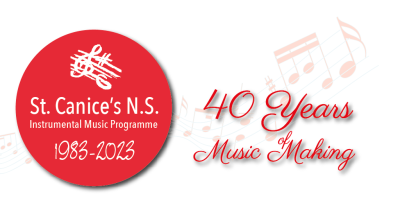In First Class budding Violin players may wish to continue their playing by taking part in our “Minims and Semibreves” or their Cello with first class Cellos. Some of our Violinists may also like to move over the Viola. Some may wish to take up the Recorder with “Petit Puffs of Wind”-a great introduction to other wind instruments which they may like to try once they get to third class. If numbers permit first class students can enjoy using the programme’s wide selection of percussion instruments by taking Junior Percussion lessons. If they are a singer now may be the time to enrol them in singing lessons. Perhaps they are interested in the Piano either? Most of our first class instrumentalists also benefit from enrolling in our Theory for Fun classes which augment and supplement their instrument learning.
Junior Percussion
The video shows Patrick O’Shea 5th Class 2013-2014 interviewed and performing in Senior Orchestra in the programme “Meet The Orchestra” recorded in May 2013 and aired on RTE Junior in September 2013
Junior Percussion players have the opportunity to play on the school’s samba drums, orchestral timapni, glockenspiel, snare drum, suspended cymbal, triangle and bass drum.
St Canice’s percussionists perform in the Senior orchestra, Junior orchestra and Jazz band and may also get together with fellow string or woodwind or brass players to form smaller performing groups.
